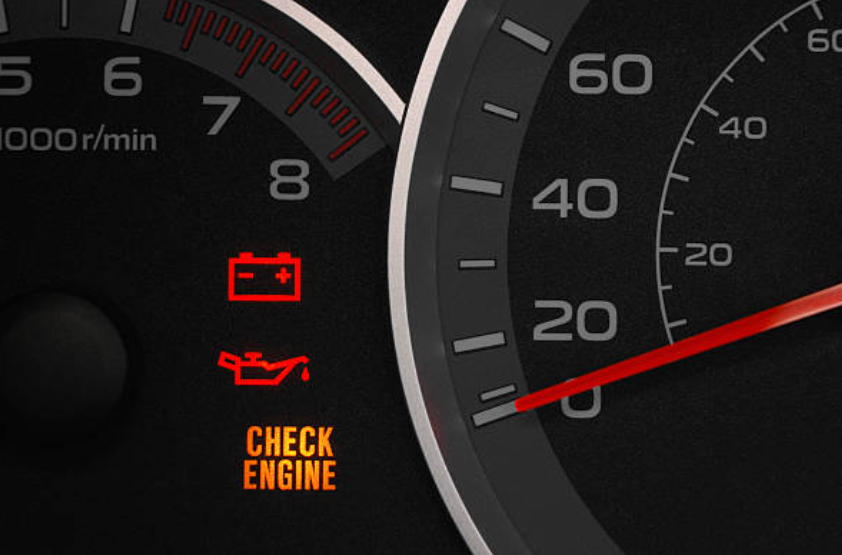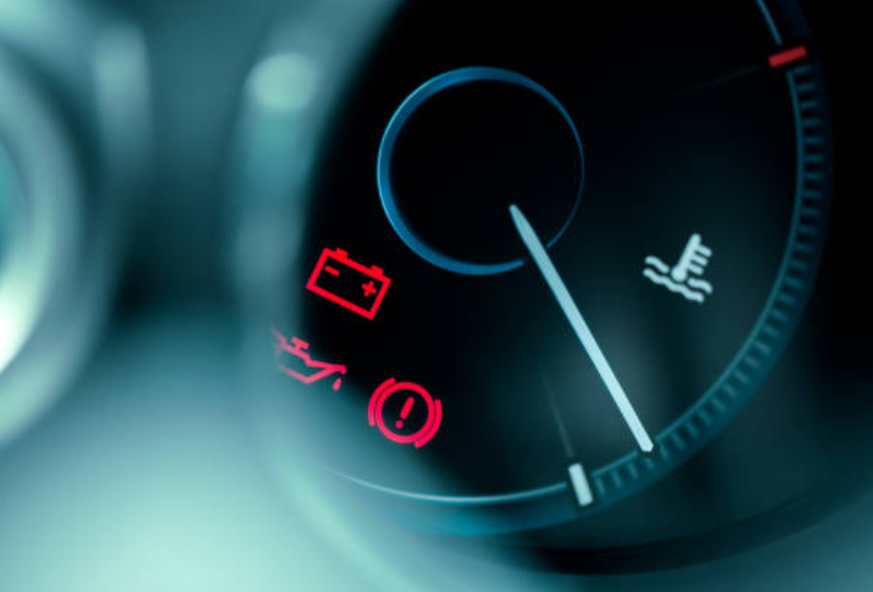What to Do When Your Battery Light Comes On?
Notice the battery light on your car dashboard? It signals an issue with the charging system, not the battery itself. When the light comes on while driving, it means the alternator isn't generating enough power, causing your car to run solely on the battery. Ignoring this can lead to stalling, power loss, or electrical damage. Learn about the common causes, how to diagnose, and fix the problem in this blog post to ensure your car runs smoothly and safely.

Common Causes of the Battery Light
-
Broken or slipping alternator belt: If the belt connecting the alternator to the engine is broken or worn, it can cause the alternator to stop working, triggering the battery light.
-
Faulty or worn alternator: Issues with the rotor, stator, voltage regulator, or rectifier in the alternator can lead to insufficient power generation, overcharging, or undercharging, resulting in the battery light activation.
-
Bad alternator pulley: Damaged or misaligned pulleys can affect the alternator's performance, leading to belt issues and the battery light turning on.
-
Faulty alternator wiring: Corroded, frayed, loose, or shorted wiring between the alternator, battery, and electrical system can cause power loss, voltage drops, or short circuits, triggering the battery light.
-
Bad battery: Aging, usage, temperature, or sulfation can degrade the battery, causing it to weaken or develop bad cells. This can make the alternator work harder or fail to charge the battery, resulting in the battery light activation.
-
Corrosion on battery terminals: Accumulated corrosion on the metal posts connecting the battery to the wiring can reduce conductivity, increase resistance, and interfere with current flow, leading to the battery light coming on.
-
Bad engine ground strap: A broken, loose, or corroded engine ground strap can disrupt the current's return path to the battery, affecting the charging system and activating the battery light.

If the battery light illuminates, do not disregard it or continue driving for an extended period. Safely pull over and promptly turn off the engine. Follow these steps to diagnose the issue:
-
Check Battery Voltage: Utilize a multimeter, voltmeter, or battery tester to measure the battery voltage. A fully charged battery should read around 12.6 volts. Voltages lower than 12 volts indicate a low or dead battery, while readings higher than 12.6 volts suggest overcharging or a bad cell.
-
Examine Alternator Output: Measure the alternator's output voltage with a multimeter, voltmeter, or battery tester. Start the engine, activate headlights, radio, and air conditioner, then connect the testing device's positive lead to the battery's positive terminal and the negative lead to the negative terminal. The alternator's output voltage should fall between 13.5 and 14.5 volts. Readings below 13.5 volts signal inadequate charging, while values above 14.5 volts indicate overcharging.
-
Inspect Belt Condition: Visually inspect the alternator belt by opening the hood and checking for cracks, tears, frays, glazing, or looseness. Assess the belt tension by gently feeling it; it should be tight enough to avoid slipping or squeaking but not excessively tight. Replace a deteriorating belt promptly.
-
Examine Wiring Connections: Visually inspect alternator and battery wiring connections for signs of corrosion, fraying, looseness, or shorting. Gently wiggle the wires to check their security. If the connections are compromised, clean, tighten, or replace them promptly.
-
Check Battery Terminals: Visually inspect battery terminals for signs of corrosion, dirt, or damage. Gently wiggle the terminals to ensure they are secure. If terminals show signs of wear, clean, tighten, or replace them without delay.

After identifying the issue, proceed with the necessary repairs or replacements depending on the cause of the battery light. Here are potential solutions for each cause:
-
Broken or slipping alternator belt: Acquire a new belt matching the specifications from your owner's manual or online. Remove the old belt by loosening the tensioner pulley, install the new belt, tighten the tensioner pulley, and check if the battery light goes off.
-
Faulty or worn alternator: Purchase a new or rebuilt alternator with matching specifications. Disconnect the battery, remove the old alternator, install the new alternator, reconnect the battery, and check if the battery light goes off.
-
Bad alternator pulley: Get a new pulley with specifications from your owner's manual or online. Disconnect the battery, remove the alternator belt, replace the pulley using appropriate tools, reinstall the belt, reconnect the battery, and check if the battery light goes off.
-
Bad alternator wiring: Procure new wiring with the correct gauge and length. Disconnect the battery, cut off old wiring, crimp or solder new wiring to corresponding terminals, insulate connections, reconnect the battery, and check if the battery light goes off.
-
Bad battery: Buy a new battery matching specifications. Disconnect the battery, remove the old battery, clean the tray and terminals, install the new battery, reconnect, and check if the battery light goes off.
-
Corrosion on battery terminals: Use a battery terminal cleaner or a baking soda and water solution. Disconnect the battery, apply cleaner or solution, scrub off corrosion, rinse, dry terminals, and reconnect. Consider using a battery terminal protector to prevent future corrosion.
-
Bad engine ground strap: Purchase a new ground strap matching specifications. Disconnect the battery, remove the old strap, install the new strap, clean contact points if necessary, reconnect the battery, and check if the battery light goes off.
-
Can a bad alternator cause the battery light to come on?
Yes, a bad alternator can cause the battery light to illuminate. Issues like worn-out components or faulty wiring can lead to insufficient charging, triggering the battery light.
-
Can a bad alternator cause the battery light to come on?
Yes, a bad alternator can cause the battery light to illuminate. Issues like worn-out components or faulty wiring can lead to insufficient charging, triggering the battery light.
Read more review here: The 10 Best Compound Miter Saws











